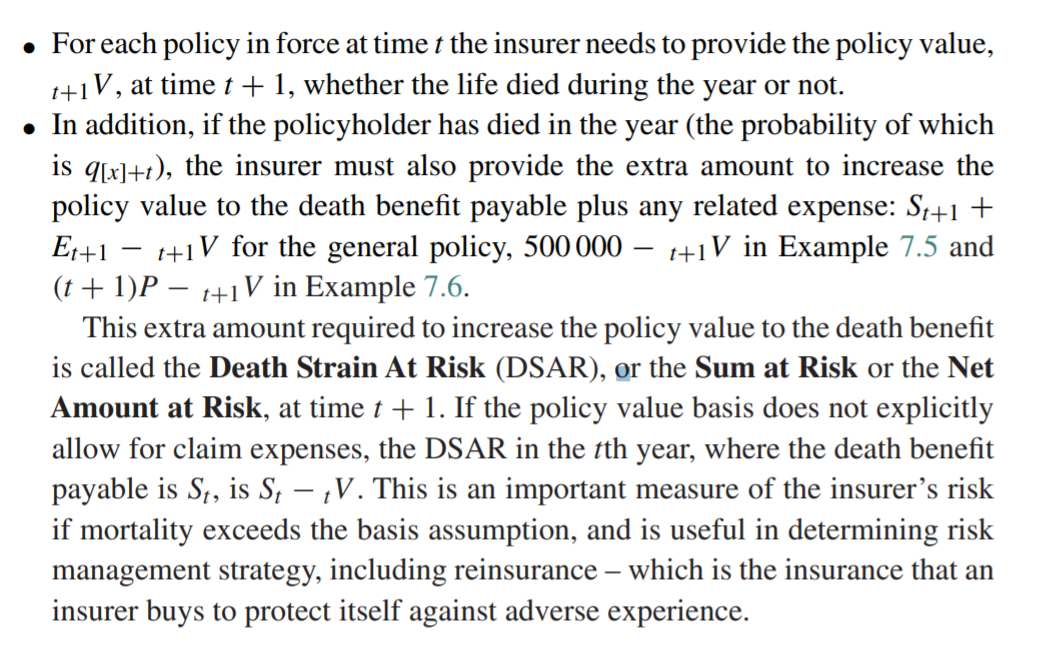风险保额:年初还是年末?
-
看到一个风险保额的公式:
$$
\text{风险保额} = \text{原始保额} - \text{准备金}
$$
其中,风险保额(Sum At Risk, SAR)是指年初风险保额,准备金是指保单年初交费后的准备金,也就是上年末准备金加本年准备金净保费。联想到两个教材里的DSAR的知识点,感觉和上述公式有冲突。
《CM1 CMP 2019》 P891,Mortality profit 一章中的知识点 Death strain at risk (DSAR):
The maximum death strain, $S-\Vx{t+1}{}$, is called the death strain at risk or DSAR in the policy year $t$ to $t + 1$.而 《Actuarial Mathematics for Life contingent Risks(1st edition)》 P215中说:
This extra amount required to increase the policy value to the death benefit is called the Death Strain At Risk (DSAR), or the Sum at Risk or the Net Amount at Risk, at time $t + 1$.总结一下上述两本教材里的说法就是:最大的死亡溢出额(death strain), $S-\Vx{t+1}{}$, 被称为 $t + 1$ 时刻的 Death Strain At Risk (简称DSAR), 也称为 Sum at Risk.
但是教材里的 $S$ 和 $\Vx{t+1}{}$ 都是该年年末的值——年末的赔付以及年末的准备金。所以应该怎么与最前面公式里说的年初统一起来?
附:准备金的递归关系式:
$$( \Vx{t}{}+P-e)(1+i)=\px{}{x+t}\cdot \Vx{t+1}{}+\qx{}{x+t}\cdot (S+f)$$从Actuarial mathematics for life contingent risks一书中我找到了如下的描述

这里面提到了两种计算Reseve的方法,一种是Net premium reserve,也就是使用Net premium,并不考虑费用的情况下计算的Reserve,还有一种是Gross premium reserve,也就是考虑费用且使用总保费计算的Reserve
如果使用第一种方法,那么一年的风险保额用年初准备金计算;如果用第二种方法,那么一年的风险保额用年末准备金计算。至于为什么;我还想不太清楚
根据这种说法,猜想第一个风险保额的公式使用的是Net Premium Reserve